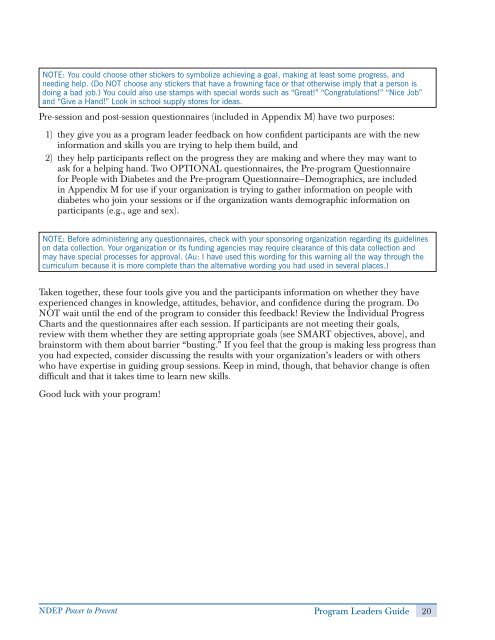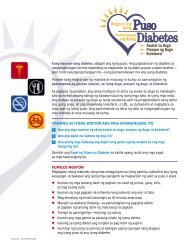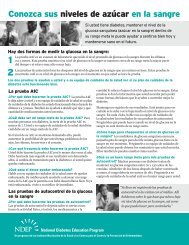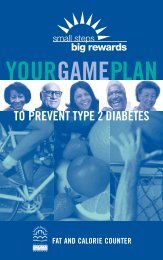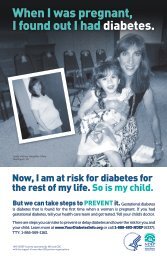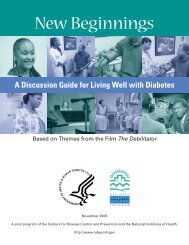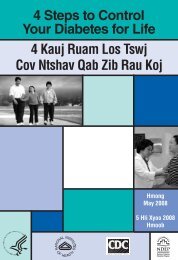Power to Prevent - National Diabetes Education Program - National ...
Power to Prevent - National Diabetes Education Program - National ...
Power to Prevent - National Diabetes Education Program - National ...
Create successful ePaper yourself
Turn your PDF publications into a flip-book with our unique Google optimized e-Paper software.
NOTE: You could choose other stickers <strong>to</strong> symbolize achieving a goal, making at least some progress, and<br />
needing help. (Do NOT choose any stickers that have a frowning face or that otherwise imply that a person is<br />
doing a bad job.) You could also use stamps with special words such as “Great!” “Congratulations!” “Nice Job”<br />
and “Give a Hand!” Look in school supply s<strong>to</strong>res for ideas.<br />
Pre-session and post-session questionnaires (included in Appendix M) have two purposes:<br />
) they give you as a program leader feedback on how confdent participants are with the new<br />
information and skills you are trying <strong>to</strong> help them build, and<br />
2) they help participants refect on the progress they are making and where they may want <strong>to</strong><br />
ask for a helping hand. Two OPTIONAL questionnaires, the Pre-program Questionnaire<br />
for People with <strong>Diabetes</strong> and the Pre-program Questionnaire—Demographics, are included<br />
in Appendix M for use if your organization is trying <strong>to</strong> gather information on people with<br />
diabetes who join your sessions or if the organization wants demographic information on<br />
participants (e.g., age and sex).<br />
NOTE: Before administering any questionnaires, check with your sponsoring organization regarding its guidelines<br />
on data collection. Your organization or its funding agencies may require clearance of this data collection and<br />
may have special processes for approval. (Au: I have used this wording for this warning all the way through the<br />
curriculum because it is more complete than the alternative wording you had used in several places.)<br />
Taken <strong>to</strong>gether, these four <strong>to</strong>ols give you and the participants information on whether they have<br />
experienced changes in knowledge, attitudes, behavior, and confdence during the program. Do<br />
NOT wait until the end of the program <strong>to</strong> consider this feedback! Review the Individual Progress<br />
Charts and the questionnaires after each session. If participants are not meeting their goals,<br />
review with them whether they are setting appropriate goals (see SMART objectives, above), and<br />
brains<strong>to</strong>rm with them about barrier “busting.” If you feel that the group is making less progress than<br />
you had expected, consider discussing the results with your organization’s leaders or with others<br />
who have expertise in guiding group sessions. Keep in mind, though, that behavior change is often<br />
diffcult and that it takes time <strong>to</strong> learn new skills.<br />
Good luck with your program!<br />
NDEP <strong>Power</strong> <strong>to</strong> <strong>Prevent</strong> <strong>Program</strong> Leaders Guide 20


